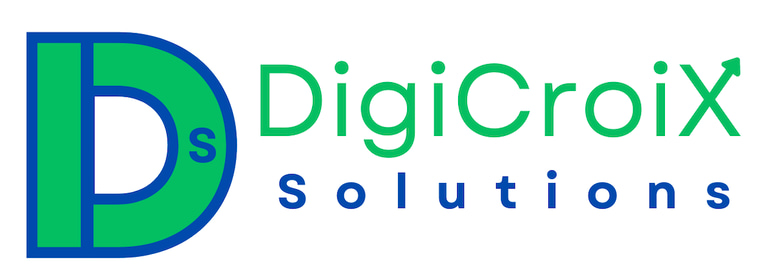Beginner’s Guide to Online Ad Campaigns for Small Businesses
Learn the basics of setting up successful online ad campaigns tailored for small businesses.
ROI-FOCUSED DIGITAL STRATEGYIMPROVE CUSTOMER EXPERIENCE WITH INSIGHTSWEBSITE TRAFFIC STRATEGIES
Vishwa Raval
12/1/20245 min read


Understanding Online Advertising
Online advertising has become an essential component of digital marketing strategies for small businesses. With the rapidly evolving online landscape, understanding the significance of online ads is crucial for entrepreneurs aiming to enhance their brand visibility and drive sales. Unlike traditional advertising, online advertising offers targeted reach, flexibility, and measurable results, making it a practical option for small businesses with limited budgets.
The core concept of online advertising revolves around promoting products or services through various digital channels, allowing businesses to connect with their target audience effectively. There are several types of online ads, including search engine advertisements, social media ads, display ads, video ads, and native ads. Each of these formats has unique advantages that can cater to different marketing goals. For instance, search engine ads help in capturing user intent with targeted keywords, while social media ads efficiently engage users based on their interests and demographics.
In addition to enhancing brand visibility, online advertising provides small businesses with crucial insights through analytical tools. These tools allow businesses to monitor performance metrics such as click-through rates, conversion rates, and customer engagement. This data-driven approach empowers small businesses to optimize their campaigns continuously, ensuring they get the best return on investment.
Current trends in online advertising highlight an increased focus on personalization and automation. Tailored ad experiences are becoming more prevalent, as consumers increasingly expect brands to address their specific needs and preferences. Additionally, advancements in artificial intelligence and machine learning have enabled automated bidding strategies and enhanced audience targeting capabilities. With these trends shaping the future of online advertising, it is clear that investing in this domain is a profitable decision for small businesses striving to thrive in the competitive digital marketplace.
Setting Your Campaign Goals
When initiating an online ad campaign, defining clear and achievable goals is paramount for ensuring its success. Establishing specific objectives allows small business owners to focus their efforts and resources on what truly matters, facilitating a more effective marketing strategy. Common goals for online ad campaigns may include increasing website traffic, generating leads, or boosting sales. Each of these objectives serves as a guiding light, assisting businesses in curating relevant content and choosing appropriate platforms for their advertising efforts.
To effectively set campaign goals, consider utilizing the SMART framework—specific, measurable, achievable, relevant, and time-bound. For instance, rather than stating, "I want more visitors to my site," a better goal could be, "I aim to increase website traffic by 30% within the next three months." This refined goal is specific in nature and measurable through analytics tools available from various online platforms.
Understanding the metrics and key performance indicators (KPIs) is crucial for gauging the success of your online ad campaigns. Common KPIs may include click-through rates (CTR), conversion rates, return on ad spend (ROAS), and customer acquisition cost (CAC). Each of these metrics provides valuable insight into different aspects of your campaign's performance, enabling you to adjust strategies as necessary for better results. For instance, if your CTR is high but conversions are low, it indicates that while your ad is attractive enough to generate clicks, it may lack engaging landing pages or appropriate targeting.
Additionally, regularly revisiting and adjusting your goals based on campaign performance can lead to sustained success. This practice not only enhances the effectiveness of current campaigns but also aligns future advertising efforts with long-term business objectives, fostering continuous growth and achievement.
Choosing the Right Platforms and Ad Formats
When embarking on online ad campaigns, selecting the right platforms and ad formats is paramount for small businesses. Different platforms cater to diverse demographics and user behaviors, thus understanding where to invest marketing dollars can significantly enhance campaign effectiveness. Among the plethora of choices available, Google Ads, Facebook Ads, and Instagram stand out as prominent options.
Google Ads is particularly advantageous for reaching individuals actively searching for specific products or services. The platform employs a pay-per-click model, which means businesses only pay when users click their advertisements. This approach is beneficial for small businesses seeking to maximize return on investment (ROI). Conversely, the competition on Google can be stiff, especially for popular keywords, which may require significant financial resources for effective ad placement.
Facebook Ads, on the other hand, offers an extensive reach through detailed demographic targeting. Businesses can customize their audience based on interests, age, location, and more, which allows for targeted ad delivery. Video ads on Facebook can engage users effectively, but they may require creative content and consistent management to maintain engagement levels. Alternatively, Instagram, while being a visually-driven platform, allows businesses to tap into the growing mobile audience, especially among younger demographics. The platform's emphasis on imagery means compelling visual content is essential for success.
Additionally, considering ad formats is crucial. Display ads can build brand awareness through banners seen across the web, while video ads may provide more engaging storytelling. Social media ads allow for two-way interaction, fostering community engagement which can lead to increased customer loyalty.
In conclusion, the choice of platform and ad format should align with the business goals and the target audience's preferences. Evaluating the unique characteristics of each platform, alongside the corresponding ad formats, will help small businesses formulate effective online ad campaigns. By making informed decisions, businesses can enhance their marketing strategy and optimize advertising efforts for greater impact.
Creating and Managing Your Ad Campaign
Creating and managing an online ad campaign requires careful planning and attention to detail. To begin, define the objectives of the campaign clearly. Are you aiming to increase brand awareness, generate leads, or drive direct sales? Once the goals are established, the next step involves crafting compelling ad copy. Effective ad copy should be clear, concise, and aligned with the needs and desires of your target audience. Using action-oriented language, along with a strong call to action (CTA), can significantly increase the chances of engaging potential customers.
In parallel with copywriting, selecting the right visuals is essential. Visual elements such as images, videos, and graphics should reflect your brand identity while also capturing the attention of viewers. It is advisable to use high-quality images that resonate with the target audience and are relevant to the ad's message. Additionally, optimizing these visuals for the platform where the ad will be displayed is crucial, as different platforms have varied requirements for image dimensions and formats.
Budgeting is another important aspect of managing online ad campaigns. Determine a budget that not only aligns with your marketing objectives but also takes into consideration the competitive landscape in your industry. Setting a daily or overall campaign budget allows for better financial management and helps to ensure that resources are effectively allocated.
Monitoring ad performance is vital for success. Utilize analytical tools to track key performance indicators (KPIs) associated with your ads, such as click-through rates (CTR), conversion rates, and return on ad spend (ROAS). A/B testing different variations of your ads can provide insights into which elements resonate most with your audience. By utilizing data-driven optimizations, you can refine your campaigns for better results. Consider employing software that simplifies campaign management, offering features such as automated reporting, tracking, and performance analysis to enhance efficiency.
Get in Touch
Book your free consultation today and let's create a strategy to elevate your success!


Address
94 Shree Nagar Apartment, Sola Road, Naranpura, Ahmedabad, Gujarat, India 380063
6706 Fulton Avenue, Burnaby, BC, Canada V5E 3H1
Quick Links
© 2025. All rights reserved.
